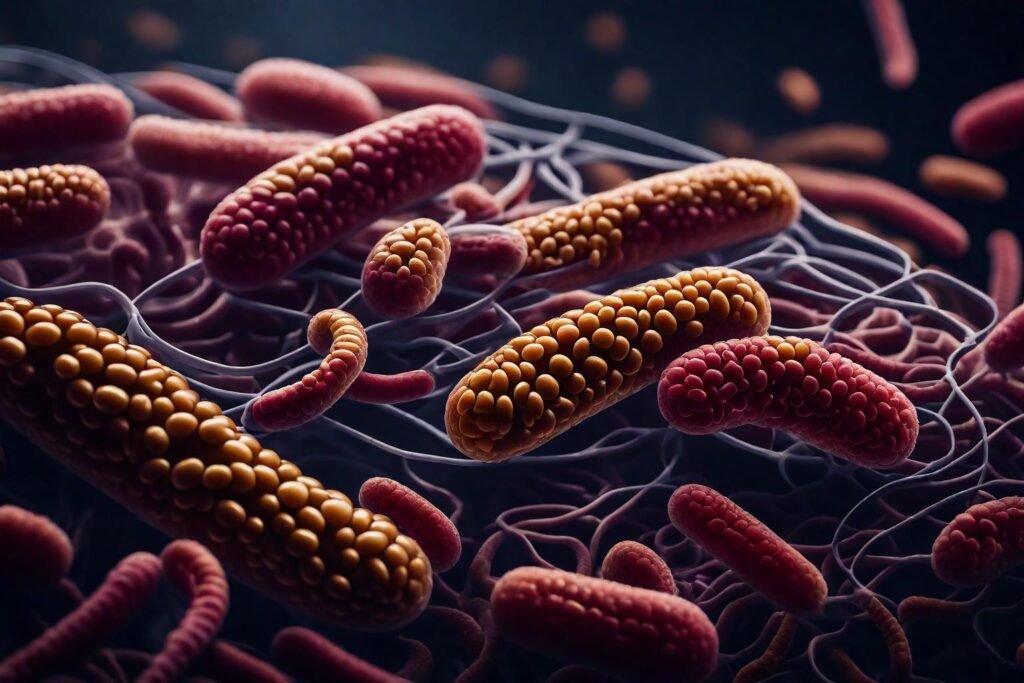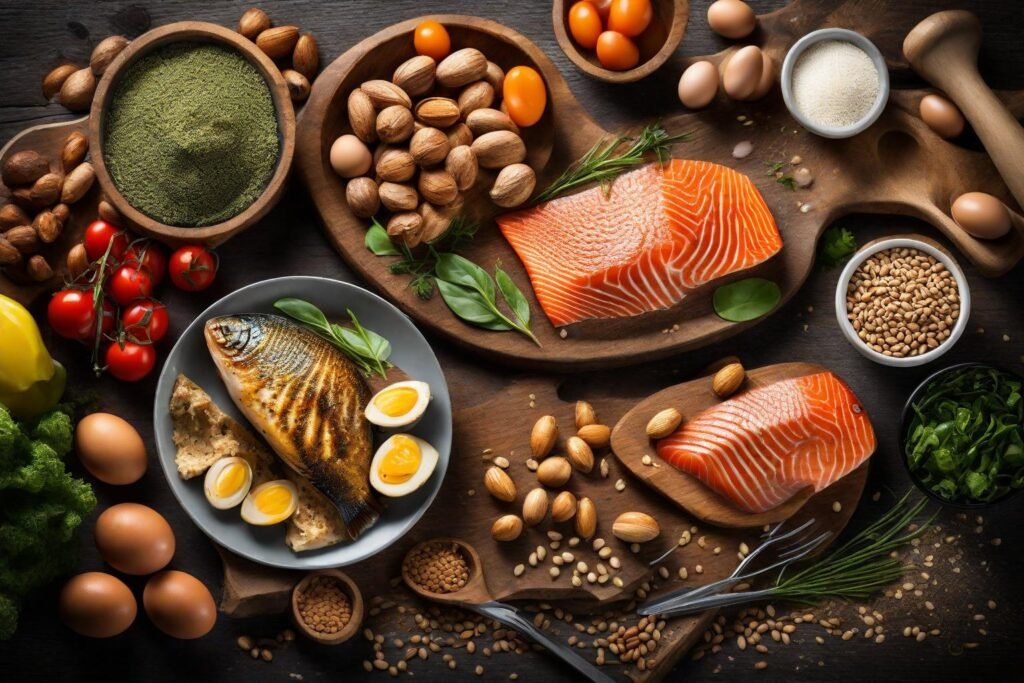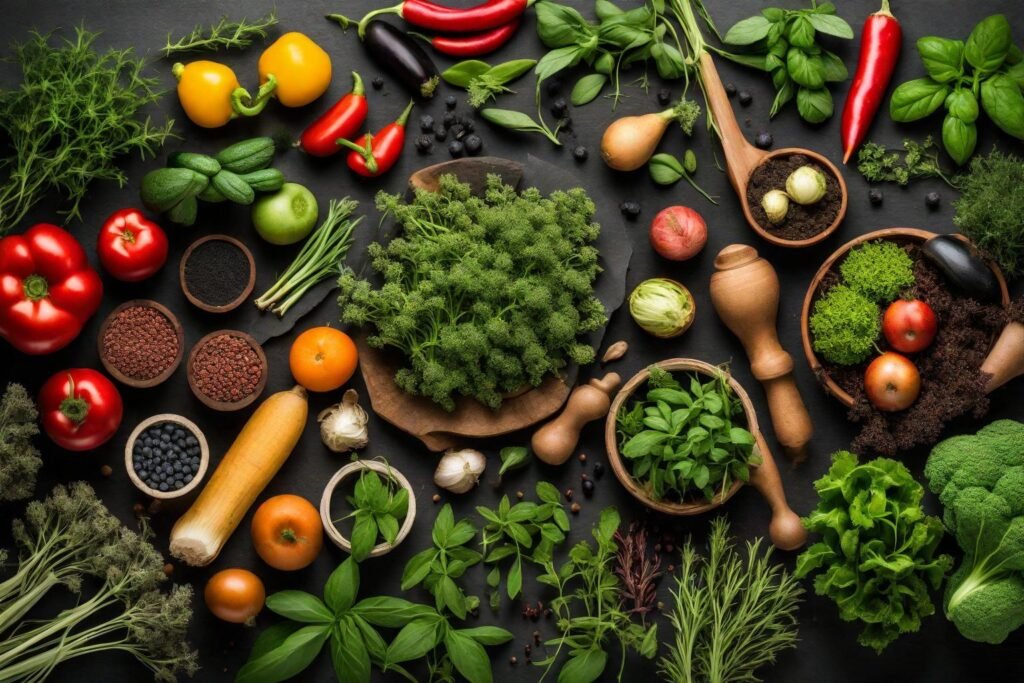
Introduction:
Restoring Gut Microbiome: Restoring gut health has become a central focus in modern discussions on wellness, as emerging studies uncover the complex link between the gut microbiome and overall well-being. One study in particular highlights a specific dietary approach called ‘The Gut Makeover,’ aimed at optimising microbiome health. In this blog post, we examine the main findings of the study and provide practical insights for those seeking to enhance their gut health. From dietary tips to unexpected advantages, we walk through science-backed recommendations that may contribute to a healthier gut and, afterwards, a healthier individual.
Study Insights:
- The ‘Gut Makeover’ study, while observational and lacking control, sheds light on the potential of targeted dietary changes over a brief four-week period.
- Participants noticed significant decreases in self-reported weight and digestive symptoms, indicating a substantial improvement in their overall well-being.Interestingly, the positive effects extended beyond the anticipated outcomes, affecting emotional and cognitive well-being.
- The study emphasises the connection between the gut and brain, hinting at promising implications for conditions like anxiety, depression, and cognitive function.
- The study proposes that manipulating the gut microbiome through ‘Gut Makeover’ dietary involvement can bring about positive changes in both physical and emotional well-being.
- This involvement includes specific dietary guidelines designed to enhance the health and diversity of the microbiome. Here are the key aspects of the dietary programme:
Restoring Gut Microbiome Dietary Programme: 'The Gut Makeover'
General Guidelines (Throughout the Four Weeks):
1. Meal Structure:
Have three main meals throughout the day, and avoid consuming snacks between them. Implement a 12-hour overnight fast between dinner and breakfast, allowing only water during this period.
2. Plant Consumption:
Eat seven American cupfuls of plants daily (uncooked volume), comprising five cups of vegetables and two cups of fruit.

3. Protein Intake:
Include protein with each meal, choosing from options like animal products, fish, eggs, nuts, or seeds.

4. Plant Variety:
Try to eat a variety of 20 to 30 different plants (fresh herbs, vegetables, and fruits) each week.

5. Cooking Oils:
Use extra virgin olive oil and coconut oil as the default cooking oils.
6. Chewing Habits:
Chew each mouthful around 20 times to aid digestion and nutrient absorption.
7. Calorie Consideration:
Do not count or restrict calories.
Restoring Gut Microbiome Additional Guidelines (Weeks 2–4):
1. Expanded Food Choices:
Incorporate butter and ghee into your diet. Include probiotic foods like fermented milk kefir, sauerkraut, tempeh, and miso.
Boost your intake of prebiotic vegetables such as bananas, fennel, asparagus, cold potatoes, onions, garlic, leeks, fennel, Jerusalem artichokes, and pak choi. Also, include bone broth or stock in your diet.
2. Excluded Foods Throughout the Four Weeks:
- Refined sugars.
- Grains (such as wheat, rice, oats, maize, and quinoa) and pulses (like lentils and beans).
- Alcohol.
- Caffeine.
- Dairy can be reintroduced after 2 weeks if no adverse symptoms occur during reintroduction.
Restoring Gut Microbiome Study Findings:
- Despite being observational and lacking control, the study noted significant decreases in self-reported weight and digestive symptoms.
- Participants saw improvements in overall well-being, including emotional and cognitive aspects.
- Surprising advantages emerged, such as diminished emotional symptoms (anxiety and depression) and better cognitive function.
- The positive influence on emotional well-being might be connected to the gut-brain axis, potentially impacting conditions like anxiety and depression.
- The study acknowledges limitations, noting a small sample size and the challenge of controlling variables. This emphasises the need for larger, controlled trials.
While the study you provided details a specific dietary intervention called ‘The Gut Makeover,’ it’s important to note that individual responses to restoring the gut microbiome can vary. The study suggests positive outcomes in a relatively short period, but the concept of the “fastest” way may differ for each person.
Restoring Gut Microbiome FAQS:
1. Fastest Way to Restore Gut Microbiome:
According to ‘The Gut Makeover’ study, a dietary programme with specific guidelines, including increased plant intake, probiotic foods, and the elimination of certain foods, demonstrated significant improvements in gut health in just four weeks.
The specific dietary intervention described in the study emphasises changes in eating habits, including plant diversity, probiotic-rich foods, and certain exclusions.
2. How Long Does It Take to Rebuild the Gut Microbiome?
Restoring Gut Microbiome: The study’s duration was four weeks, during which participants reported improvements in weight, digestive symptoms, emotional well-being, and cognitive function.
Individual timelines for rebuilding the gut microbiome can vary, and factors such as pre-existing conditions, diet history, and overall health may influence the speed of recovery.
3. Is it Possible to Restore the Gut Microbiome?
The study suggests that dietary involvement, such as ‘The Gut Makeover,’ has the potential to positively impact the gut microbiome, leading to improvements in various aspects of health.
The results of this study support the idea that targeted dietary changes can contribute to the restoration of the gut microbiome.
- Foods that Repair Gut Microbiome (Based on ‘The Gut Makeover’ Study):
Increase consumption of diverse plant-based foods (vegetables and fruits).Include protein sources like animal products, fish, eggs, nuts, and seeds.
Incorporate probiotic-rich foods such as fermented milk kefir, sauerkraut, tempeh, and miso.
Integrate prebiotic vegetables like bananas, fennel, asparagus, cold potatoes, onions, garlic, leeks, fennel, Jerusalem artichokes, and pak choi.
Use extra virgin olive oil and coconut oil as the default cooking oils.
Exclude refined sugars, grains, alcohol, caffeine, and dairy for the initial four weeks.
4. 3 Gut-Destroying Foods (Not Explicitly Stated in the Study):
The study does not explicitly list specific “gut-destroying” foods. However, based on general knowledge, some foods that may negatively impact the gut include highly processed foods, excessive sugars, and foods containing artificial additives.
5. Fastest Way to Fix Gut Bacteria (Based on ‘The Gut Makeover’ Study):
Following the dietary guidelines outlined in ‘The Gut Makeover’ study, including increased plant diversity, probiotic-rich foods, and the elimination of certain foods, could be considered a targeted approach to supporting gut bacteria.
It’s important to note that the term “fastest” may vary among individuals, and consistency in following the recommended dietary changes is key.
Note:
The study’s findings provide valuable insights, but individual responses can vary, and it’s advisable to consult with healthcare professionals before making significant dietary changes, especially for individuals with existing health conditions.
Conclusion on Restoring Gut Microbiome:
In restoring Gut Microbiome conclusion , the study on ‘The Gut Makeover’ illuminates the profound impact of targeted dietary changes on gut health and overall well-being. While the findings are promising, it’s crucial to approach any health-related adjustments with consideration for individual differences. Before beginning a significant dietary shift, it is advisable to consult with healthcare professionals who can provide personalised guidance based on your specific health profile.
Your journey towards a healthier gut is unique, and healthcare professionals can offer valuable insights to ensure that any modifications align with your individual needs. As you explore the science-backed tips outlined in this study, remember that a collaborative approach with healthcare experts will optimise the potential benefits and contribute to a holistic and sustainable improvement in your well-being.
